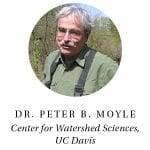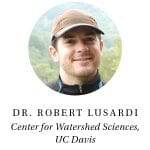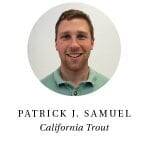CalTrout Expands Statewide Restoration Work Into New Mt. Lassen Region
California Trout recently expanded our reach in Northern California with the opening of our new Mt. Lassen region. The region has a physical office in Chico and joins CalTrout’s six other regional offices across California, a legislative/policy office in Sacramento, and CalTrout headquarters in San Francisco.
Mt. Lassen Region
Projects in CalTrout’s Mt. Lassen region concentrate on east-side tributaries of the Sacramento River which drain from the Cascade mountains in Butte, Tehama, and Shasta counties. These projects strive to halt the current decline in native fish populations, recover endangered populations specifically adapted to the region’s geography, and support general ecosystem function within the Mt. Lassen region. Specifically, we will work to restore connectivity for migratory fishes, provide access to colder and less degraded habitats, and create natural segregation between fish runs. CalTrout recently received a funding recommendation for a fish passage project on Ótakim Séwi (Big Chico Creek) in Iron Canyon, which will serve as the flagship project for the new Mt. Lassen region.
“As a 20-year resident of Chico, when I heard CalTrout was expanding into this region and was taking on a fish passage project in Iron Canyon, I knew I had to be part of it,” said Holly Swan, new Project Manager for CalTrout’s Mt. Lassen region. “I am proud of CalTrout’s expansion into Chico and the Mt. Lassen region, and I am excited to help bring the importance of healthy watersheds and fish populations to the forefront of my community.”
The Iron Canyon Fish Passage Project received a funding recommendation from the National Oceanic and Atmospheric Administration (NOAA) in December 2022. Project partners include CSU Chico’s Big Chico Creek Ecological Reserve, the Mechoopda Tribe, California Department of Fish and Wildlife, the city of Chico, and more. The project will remove a fish passage barrier in Iron Canyon, restoring access to more than eight miles of critical spawning and rearing habitat for steelhead and spring-run Chinook salmon in the upper reaches of the creek. This includes cold water habitat critical to build climate resilience for fish populations.
“I am extremely thrilled to be partnering with the CSU Chico Ecological Reserve on this project as a two-time Chico State alum,” Swan said. “But most of all, I am excited to see the cascading ecological effects these migratory fish will bring to the entire ecosystem in Bidwell Park.”
Because these ocean-going migratory fish are keystone species, the entire ecosystem of upper Bidwell Park, which surrounds the project, will be revitalized as fish populations rebound, ultimately benefiting raptors, bears, and other natural fish predators and bringing nutrients up from the ocean to enrich the soil and native plants.
“NOAA identified this project as a top priority to recover spring-run Chinook salmon in the Central Valley,” said Damon Goodman, CalTrout’s Mt. Shasta-Klamath and Mt. Lassen Regional Director. “We will be working with the Mechoopda Tribe, the Big Chico Creek Ecological Reserve, and our other municipal, agency, university, and private partners to make sure the project also benefits the entire watershed and all its inhabitants, including the people of Chico who are devoted to Bidwell Park. I’m excited to be a part of this team, taking an ecosystem-based approach to restore the native fish populations in Big Chico Creek.”
In addition to project work on Big Chico Creek, CalTrout staff in the Mt. Lassen region lead habitat restoration and fish passage improvement projects in the Battle Creek watershed which historically supported winter-run Chinook salmon, now a federally endangered species. Battle Creek is a tributary to the Sacramento River, located near Red Bluff, CA. In 2021, CalTrout and partners completed a barrier removal and fish passage project on North Fork Battle Creek at Eagle Canyon, restoring access to four miles of winter-run Chinook salmon habitat. To further enhance fish passage opportunities, CalTrout is advocating for dam removal on Battle Creek. Currently, eight dams block access to 42 miles of anadromous habitat within the watershed. CalTrout is actively pursuing removal of this complex of hydroelectric facilities owned by PG&E. To support our advocacy work, we are forming partnerships within the surrounding community and with other nonprofits including the Battle Creek Watershed Conservancy.
Beyond Battle Creek, CalTrout continues to build relationships with the Mechoopda Tribe and other nonprofits and agencies that focus on issues within the upper watershed of Butte Creek.






